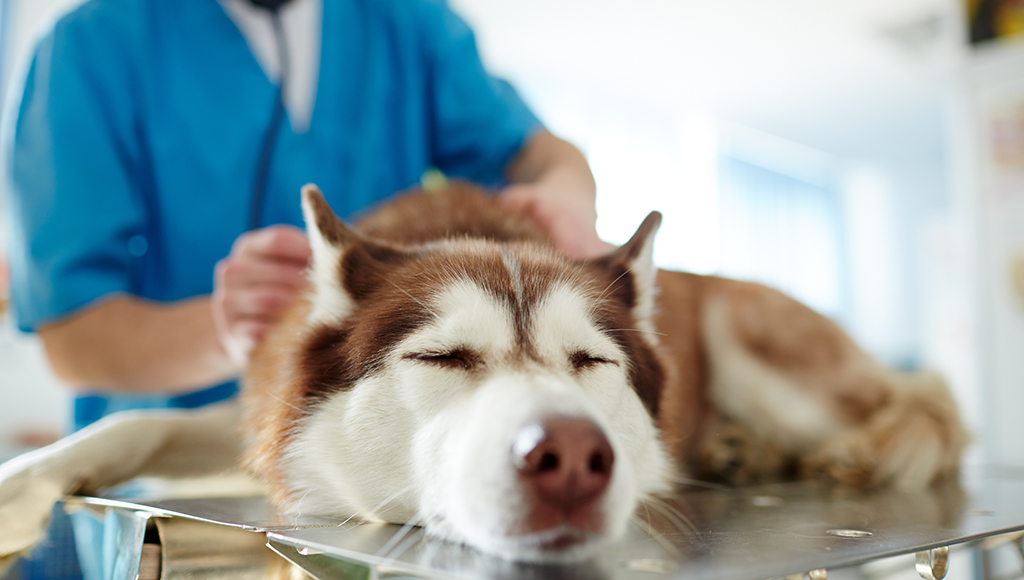Canine Liver Disease: Diagnosis and Care
The risk of liver disease can be reduced by educating yourself about it.

Canine liver disease is among the top five leading causes of non-accidental death in dogs, and should be taken seriously. The liver is responsible for a number of essential bodily functions. If compromised in any way, it puts your dog's overall health in jeopardy. Luckily, liver disease and death can be avoided just by educating yourself about the disease and learning what you can do to help prevent it.
Liver disease is just a general medical term used to describe any kind of disorder or condition affecting the liver, causing elevated blood levels of liver enzymes. There are many different forms of liver disease. This should not be surprising when you consider the importance and metabolic activity of the liver. Just like the human liver, a dog’s liver removes toxins and other hazardous things from its bloodstream. A dog’s liver is able to function even when 80% is consumed by the disease, which is amazing. Unfortunately, the fact that the liver can function when it’s this diseased leads to other well developed diseases before diagnostics are eventually made, which makes it even more important to prevent or treat as soon as possible.
Possible Causes of Liver Disease
Some things that may cause your dog to suffer from liver disease are:
- Exposure to toxins such as
lead, iron, and phosphorus
- Skin infections throughout
the dog’s body
- Viral and bacterial
infections
- Altered blood flow to the
liver due to heart disease or other congenital abnormality
- Hepatitis
- Dental cavities and other
various dental diseases
- Genetics - common in West
Highland Terriers and Cocker Spaniels
- Inbreeding
- Drugs - even drugs prescribed
by a veterinarian can cause liver disease if used for a prolonged period
of time
Signs and Symptoms
Some changes that you may notice if your dog has liver disease are:
- Yellowing of the gums, skin,
and eyes
- Loss of appetite
- increased thirst
- Lethargy
- Prolonged vomiting
- Severe diarrhea
- Orange urine and an increased
frequency of urination
- Behavioral change such as pacing
and/or severe depression
- Swollen stomach
- Seizures - in severe cases
Different Types of Liver Disease
1. Infectious Canine Hepatitis - an acute liver infection in dogs caused by the canine adenovirus type-1 (CAV-1). This disease is spread in the feces, urine, blood, saliva and nasal discharge of infected dogs. It’s contracted through the mouth or nose, where it replicates in the tonsils. The virus then infects the liver and kidneys. The incubation period is 4 to 7 days.
Symptoms: fever, depression, loss of appetite, coughing and a tender abdomen. Severe cases will develop bleeding disorders which can cause hematomas to form in the mouth.
2. Leptospirosis - an infectious disease which is passed to dogs through contact with urine from other animals infected with leptospirosis. Carriers of leptospirosis may be rodents, skunks, raccoons and other infected animals, including both dogs and people.
Symptoms: weight loss, fever, loss of appetite, nausea, vomiting, muscle or joint pain, bloody urine and uveitis (changes in the eye).
3. Idiopathic Hepatitis - not a single disease, but a group of liver diseases causing cirrhosis. Idiopathic chronic hepatitis is an autoimmune disorder. There is no known cause, but the immune system of the dog produces antibodies that attack the liver, which then becomes inflamed and progressively leads to liver failure.
Symptoms: anorexia, depression, weakness. More severe cases may include lesions.
Diagnosing Liver Disease
Liver disease is diagnosed by various blood and urine tests, abdominal radiographs (x-rays), and abdominal ultrasounds. In some cases a biopsy of the liver is needed to determine the cause of the liver disease.
1. Blood Tests - will show elevated levels of various enzymes. In addition high levels of bilirubin, an orange-yellow pigment formed in the liver by the breakdown of hemoglobin, which is then excreted in bile will also be present. A bile acids test will frequently appear elevated, as well as the blood ammonia level.
2. Radiography (x-rays) - will show if the liver is enlarged. Weight loss may also be more apparent on the radiograph, even though abdominal fat stores might appear normal.
3. Ultrasound - reveals any changes in the internal anatomy of the liver, including abnormal growths, if any. This test also helps to reveal any inflammation of the pancreas, which could be an underlying cause of liver disease or distress.
4. Exploratory Surgery - usually performed when extreme symptoms appear or diagnosis by any of the previous tests is inconclusive. This allows a biopsy of the liver, as well as visualization of the surrounding abdominal organs for any disorders that might be contributing to the liver disease.
Treatment
Supportive care is crucial, and may even require temporary hospitalization until all primary medications have been given, and blood parameters return to the normal range or show continuous significant improvement. Correction of any developed dehydration, as the result of poor appetite, will be performed intravenously (IV), along with B-complex vitamin supplementation to correct any nutritional deficiencies caused by the disease.
As with many medical disorders, dietary therapy is important in the treatment of a dog with liver disease. High quality and highly digestible carbohydrates are recommended to supply energy for your dog. Inferior types of carbohydrates that are undigested are fermented by intestinal bacteria, which increase the bacteria in the colon. These bacteria then break down dietary proteins and produce extra ammonia, which is absorbed into the body and contributes to toxicity in dogs with liver disease. Frequent meals of high quality simple carbohydrates, such as white rice and potatoes, are recommended. Vegetables act as a source of complex carbohydrates and provide fiber. The fiber helps bind intestinal toxins, and promotes bowel movements to remove these toxins from the body.
Your veterinarian will schedule regular visits during treatment to monitor the improvement of your dog, as well as any new or reoccurring symptoms that may have appeared. It is very important that you do not skip any appointments with your veterinarian or fail to follow the prescribed regimen. It may cause your dog to relapse, causing further damage and more serious consequences.
Ready to start saving money on pet wellness care?
Then take a look at Mint Wellness, the pet wellness plan that provides fast reimbursement on routine pet care. Save on vaccinations, wellness exams, preventatives, dental, and more!
Learn More


